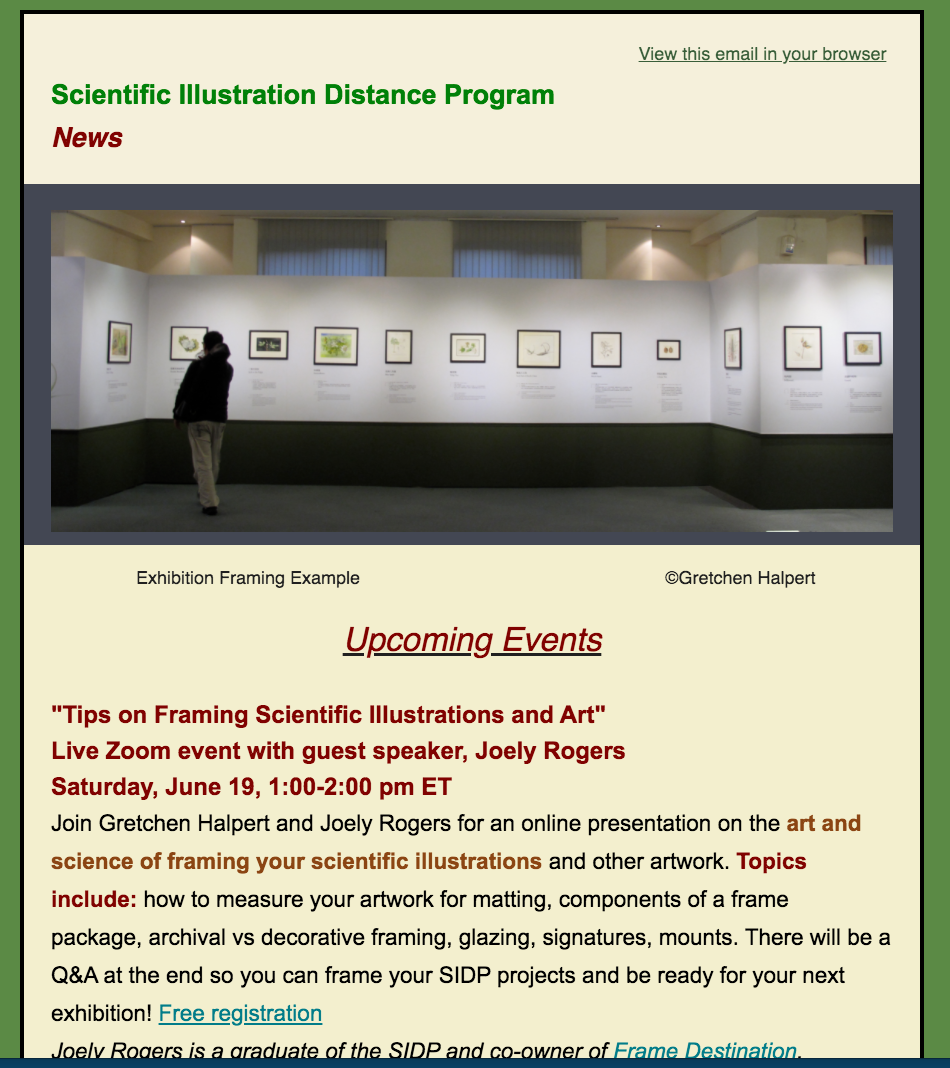Why Wasn't My Artwork Accepted?
- Gretchen Halpert
- Aug 27, 2022
- 3 min read
Updated: Aug 30, 2022
You put considerable work into submitting artwork for exhibition, reviewing your files, choosing your favorite. You may have even created artwork specifically for this show, or perhaps, you simple entered what you had on hand.
You're new to this field; you doubted you'd get in. You're an old pro; there was no reason your professional science illustration would not be chosen.

I was one of four jurors for the 2022 online GNSI SciComm exhibition. During the GNSI conference, several artists expressed dismay their work was not chosen. Knowing these artists, I was surprised as well. I hope this article is useful to everyone.
First, remember your artwork is not you. YOU were not rejected; your artwork was simply not chosen for THIS show. The same piece next year may take center stage.
The Jurying Process
Three jurors received the same artwork to review; a fourth reviewed a new category of concept-driven art. (Learn about the jurors: Ivan Gromicho, Tyler Keillor, Hayley Gillespie, Gretchen Halpert.)
Independently, we scored each piece from 0-5, from "Not Recommended" to "Exemplary Recommendation". We considered Appearance, Technique, Storytelling, Creativity, Originality, Educational Value, and, of course, Scientific Accuracy.
I reviewed every one of 174 traditional entries three times to make sure I judged each work fairly and consistently.
Once our scores were in, the Exhibition Committee chose from our choices. Why? Perhaps there was limited space, most common in live exhibitions. Sometimes there are multiple submissions on the same topic. For example, if fifteen botanical portraits and one pollinator infographic are submitted, the Committee may choose the pollinator and a selection of the botanicals to keep the exhibition varied. If you submitted multiple images, the Committee may chose just one so more artists are represented.
While reviewing submissions, I took notes of my thoughts to share with students:
Descriptions Tips
You were given two spaces to describe your submission. Here are a few tips for next year:
Write concise and interesting descriptions, versus writing, "for portfolio". Drawing for your portfolio is fine. Go beyond and tell us something scientific about your image.
Describe your process, especially your research. I want to know how you got to your finished piece. Did you render a photograph the client gave you? Did you gather live sketches, recreate preserved specimens, or take photographs while on safari?
Resist writing at length about challenges you experienced.
Use complete sentences. Use spell check.
Most descriptions were 50-100 words. Try to keep yours within that range. Longer descriptions require a "see more" effort.
Briefly explain how you confirmed accuracy, especially if you don't have a client reviewing your work.
Don't deprecate anyone/organization or drop names, unless pertinent to the specific piece you entered. Focus on your illustration.
If you provided illustrations while others created the layout and graphics, note that so you are not judged on a graphic designer or researcher's choices.
Artwork
Make your work looks its best and stay anonymous.
Ensure your image looks good enlarged and reduced.
Clean up your image and make the best photograph or scan you can. No reflections, gray corners, etc.
Along with the scoring criteria listed above, consider composition, contrast and unusual viewpoints, when applicable.
Make sure your name is NOT on the artwork. This is important. We want to judge blindly. Do not add your name to the written description, either.
So, you didn't get into the exhibition this year. I believe if you polled the GNSI membership, you would find many have been surprised and disappointed at not getting in some time; as well as those who have been equally surprised and thrilled at getting in.
What to do?
Take advantage of the Portfolio Share and TweetStorm to show your chops.
Get feedback. Many of us offer professional feedback, or ask colleagues or professors to lend an eye. Try again. Twenty twenty three is just around the corner.
Cheers,
Gretchen



Comments